This article explains how to automatically open the Terminal with an administrator window in Windows 11.
Windows Terminal is a modern host application for the command-line shells, including Command Prompt, Windows PowerShell, and bash (via Windows Subsystem for Linux (WSL)).
Unlike the previous shell apps, Windows Terminal has many features, including multiple tabs, panes, Unicode and UTF-8 character support, a GPU-accelerated text rendering engine, and theme customization with text, colors, backgrounds, and shortcuts.
If you want to use the Terminal with administrative privileges, you can right-click on the Terminal app and select to open as Administrator.
Windows Terminal app has a setting that lets you automatically open an admin window each time you run the app.
The steps below show you how to do that.
Automatically open the Terminal app in an admin window
As described above, you can set up the Terminal app to open automatically in an admin window. In this admin window, you can run with administrator privileges without running as Administrator each time.
Here’s how to do that.
First, open the Windows Terminal app.
You can do that by clicking on the Start menu and searching for Terminal. Then, under Best match, select and open the Windows Terminal app.
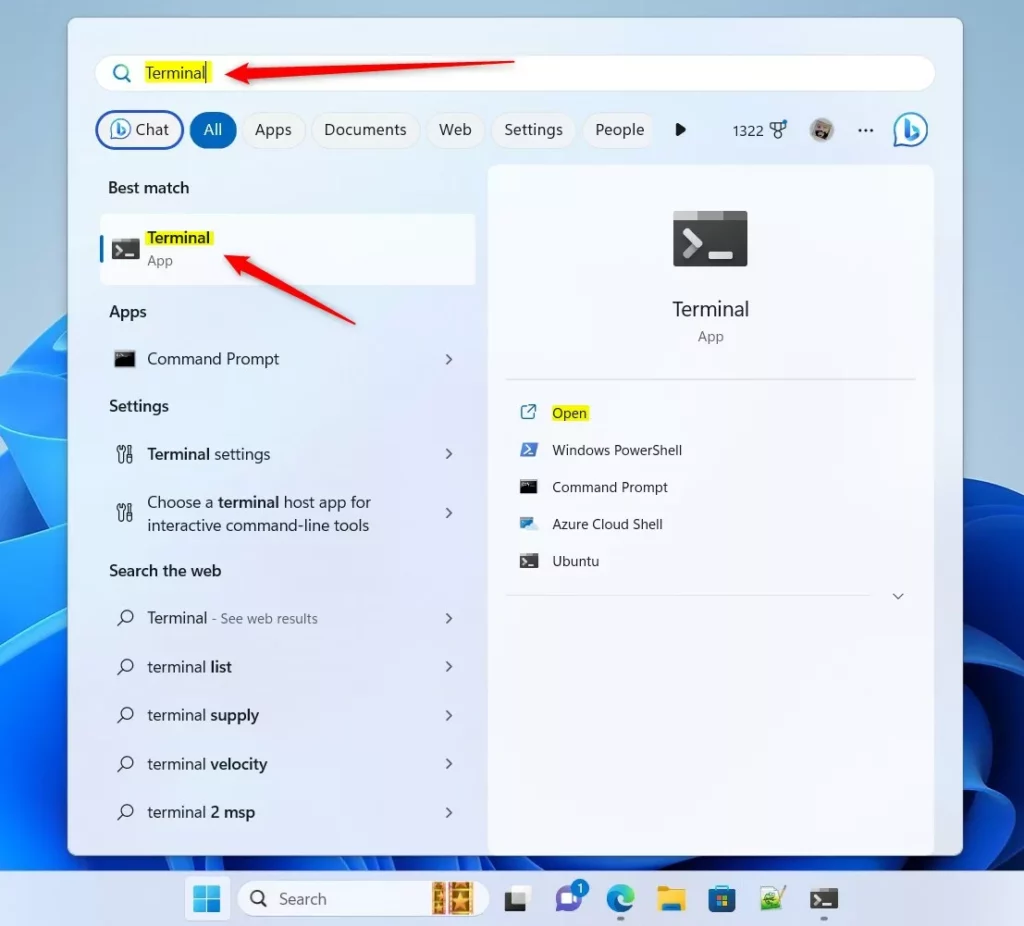
When the Terminal app opens, click the down arrow button on the top bar, and select Settings (Ctrl +,).
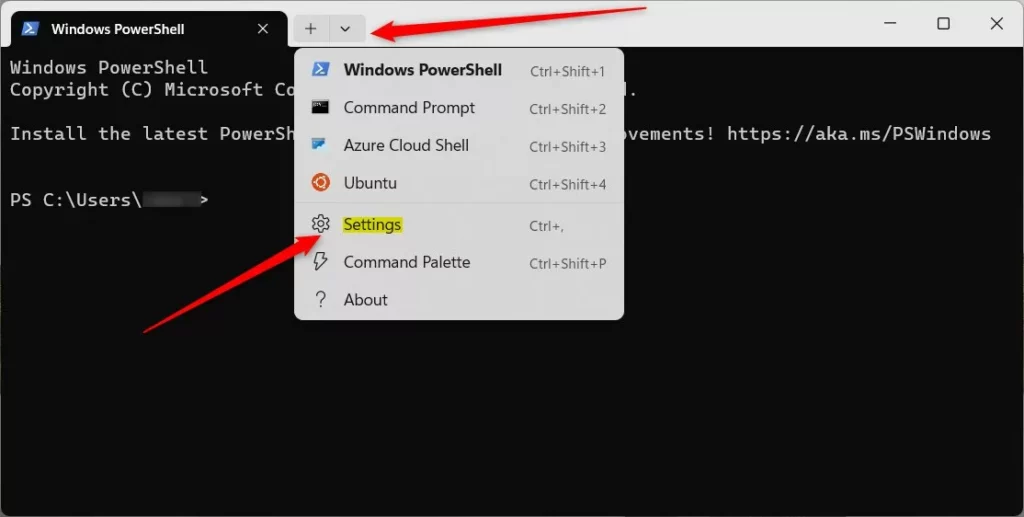
On the Settings window, under Profile, click on the Defaults tab. Then select the tile “Run this profile as Administrator,” and toggle the button to the On position to enable the Terminal app to always open in an admin window.
To disable it, toggle the button back to the Off position.
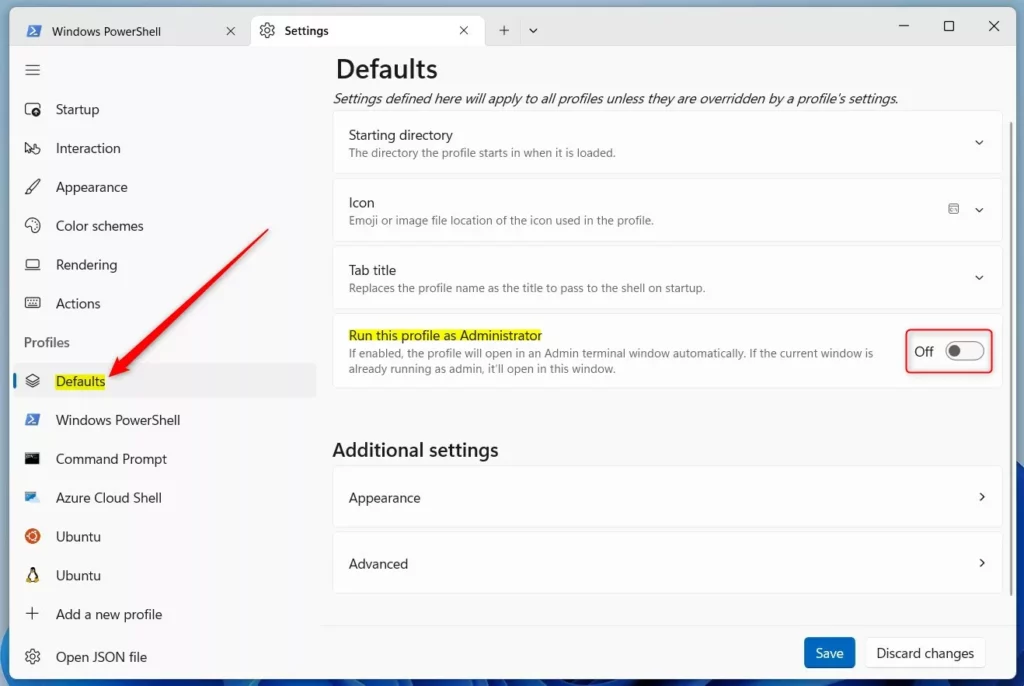
Click on the Save button to save your changes and exit.
Open the Windows Terminal automatically in an elevated window
Another way you can automatically open up the Terminal in an “elevated” window (running as Administrator) is to use its built-in JSON configuration file.
To do that, follow the steps below.
Select the Open JSON file button on the bottom left.
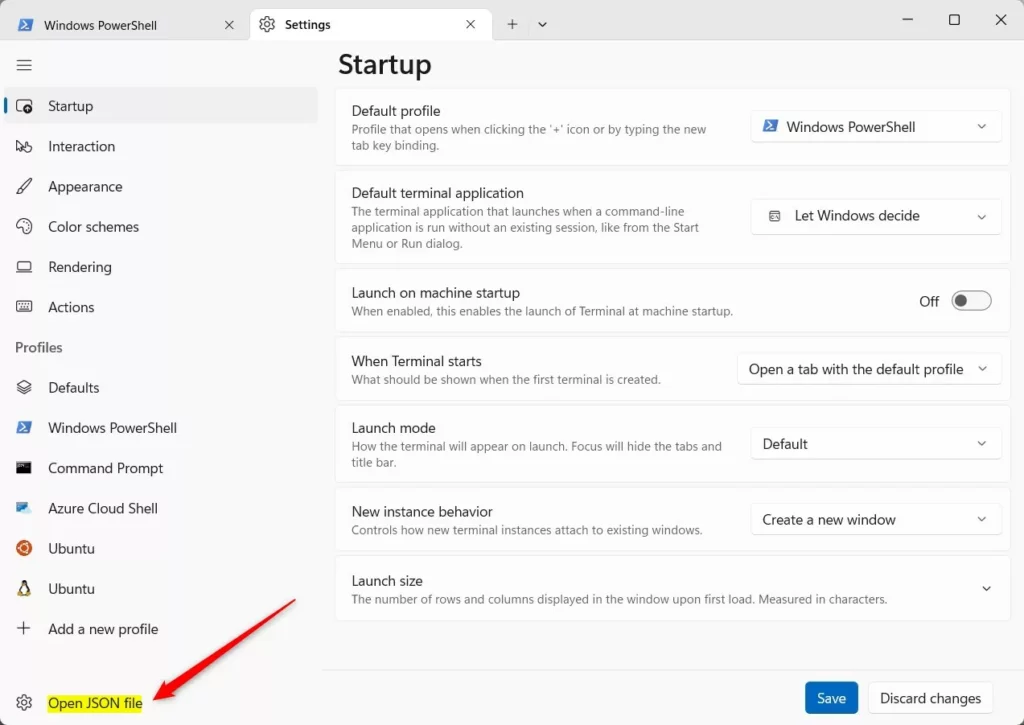
When the file opens, locate the highlighted section.
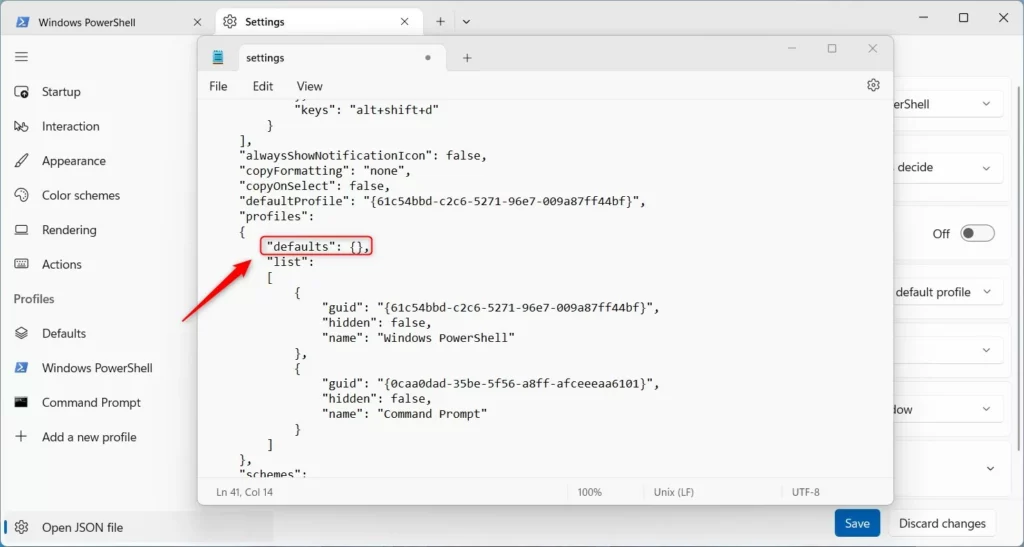
To turn on or off opening the Terminal app in an elevated window, add the line below to the exact area of the configuration file.
Disable:
"elevate":false,
Add the line at the exact location in the file and save.
"defaults":
{
"elevate": false
},
Enable:
"elevate":true,
Add the line to the exact location in the configuration file.
"defaults":
{
"elevate": true
},
Save the JSON configuration file to apply your changes.
That should do it!
Reference:
https://learn.microsoft.com/en-us/windows/terminal/
Conclusion:
- Enabling or disabling the Terminal app to open in an elevated window provides flexibility in managing administrative privileges effectively.
- Windows Terminal’s features, including multiple tabs, panes, GPU-accelerated text rendering, and theme customization, enhance the command-line user experience.
- Setting the Terminal app to always open in an admin window streamlines the process of running commands with elevated privileges.
- Utilizing the JSON configuration file offers another approach to control the elevation behavior of the Terminal app.
- For further information and updates, refer to the official Windows Terminal documentation.

Leave a Reply